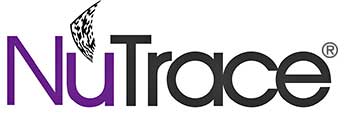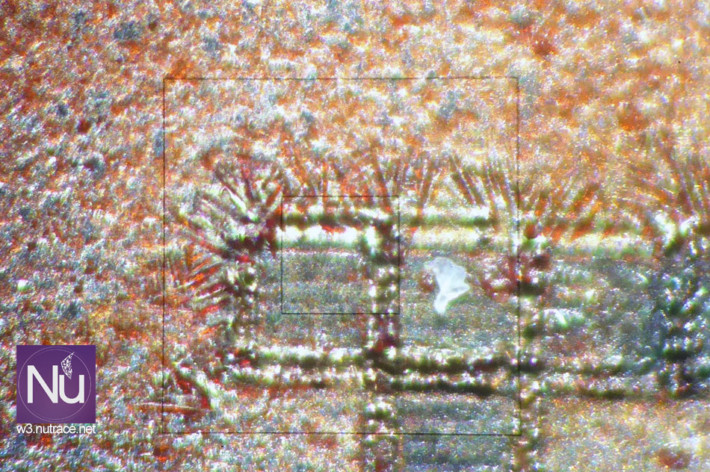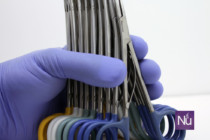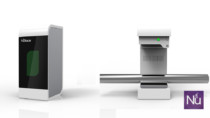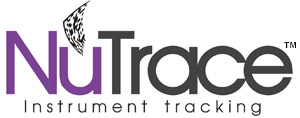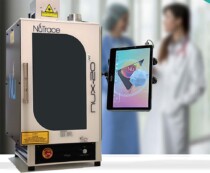When we first started studying the physics of lasers, wavelengths, metals etc, it took me back to my early days of high school chem lab where I learned the basics of metals, the periodic table (yes, one-by-one with atomic mass, atomic number and symbol names). I was surprised back then to learn that the only element that rusts in nature is iron (Fe).
Our main concern at the Nutrace lab wasn’t actually the rust on the surgical instruments but more where to find the coffee for those long nights of tireless research and working with the laser.
Why weren't we really concerned about rust? Well, think about something:
There are so many industries working with stainless steel. Think about the food industry storing all kinds of food: stainless steel tanks storage for milk, beer, water, etc. The nuclear plants with hundreds of stainless steel valves keeping nuclear fuel safe. The aerospace industry with many airplane parts built with stainless steel. NASA and the space program. The ISS built with thousands of stainless steel parts. The shipyards building cruise ships and oil tankers. All of them have something in common: They must at some point repair, grain, weld and re-passivate their stainless steel. Rust is a major problem for them as well.
This was the reason we weren't concerned. We knew the answers were out there. Think of a surgeon just beginning his/her specialty – terrified to bleed a patient when the time comes to cut. Her intent will be on perfecting the surgical technique - how to ensure minimum bleeding or completely avoid it.
There is no such "Surgical Stainless Steel”. The metallurgic industry standards have clearly established all different kind of stainless steel. Most surgical instruments are made of 316 SS and 420 SS with the 316 being the most common, high-resistant corrosion molybdenum added, nonmagnetic (Austenitic) stainless steel. All stainless steel instruments (and in general any other stainless steel) will rust or tarnish over time and this is a fact. The chemicals in the enzymatic foam, the sterilizer, the humidity, the washer, the marine salt, the open exposure in tanks, the ultra-low temperatures, ice, detergents, and many other external factors deteriorate the chromium oxide layer (Cr2O3) overtime. This layer is too thin - just a few atoms visibly thick.
Once we perfected our marking techniques and understood the behavior of the stainless steel reacting with the laser beam, we started looking and visiting every industry involved in the repair, construction, and maintenance of stainless steel. We received feedback from NASA and their passivation program. The International Atomic Energy Agency (IAEA) shared many studies with us including how to “see” and analyze the stainless steel passive layer in the same way they do: by spectrophotometry.
The beverage manufacturers and many other industries shared their research with us. And shock! All this is nothing more than simple chemistry. We are bringing you an easy, quick and approved passivation process as we laser mark all the surgical stainless steel instruments in your hospital. Not only the laser mark not rust but the entire instrument will prevent/stop tarnishing as well.
So, the question is: Why are so many companies still continuing to accept surgical instrument rust on laser marks and why don't they know what we know? This is not proprietary information here. The only thing I can assume is they don’t have the ONE THING WE HAVE: PASSION! We are passionate about what we do, passionate about learning, researching. We are passionate about fixing the problems between SPD and OR. And perhaps most importantly, we are passionate about the people we work for. The companies we serve. That’s what keeps us researching and working incredibly long hours under the laser. We strive to see our partners improve as we demonstrate day-by-day the best sterilization management tool in the world (Stemato).
So, the next time you hear about instrument laser mark rust, think in all those industries that take care of millions of people in the air, in the ocean, in space, in the food industry, and the nuclear plants generating the energy that powers your computer at this very moment. Rust in surgical stainless steel instruments is something you shouldn't worry about. Research and long nights of work took care of that problem for you.
